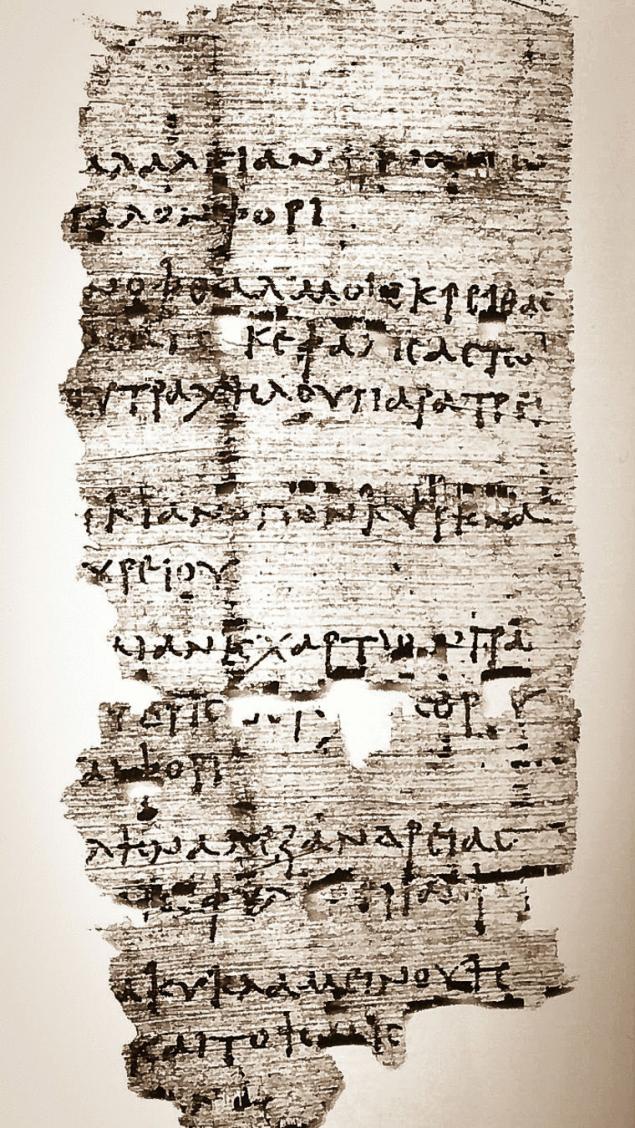384
Decrypted ancient Egyptian recipe for a hangover from the papyrus of the second century
Thirty two million five hundred thirty six thousand six hundred ninety seven
Experts in the Greek language deciphered ancient medical recipes contained in the so-called axirinci papyri, including the recipe for the hangover II century.
As it turned out, 1,900-year-old papyrus of a "sick drunken head," it is recommended to wear the leaf necklace made from plants Danae cestista (Ruscus racemosus L.). Previously, scientists have known that people in the ancient world used this plant as medicine for a headache, but its effectiveness is unknown as to if it's from a hangover.
Among the transcribed prescriptions are also found of hemorrhoids, ulcers, diseases of the gums and teeth and even the description eye surgery without anesthesia.
In General, writes portal LiveScience, the scientists were able to translate 30 medical papyri — they were all found near the ancient Egyptian city Occuring in 1896 of the Oxford scholars Bernard Grenfell and Arthur hunt. The papyri were about half a million, they are written in different languages: Latin, Greek, Arabic — and cover the period from 50 ad to the mid-sixth century. Their study and the publication deals with the study Society of Egypt, based in Oxford. Every year there are new collections, entitled the Oxyrhynchus Papyri. The last of the printed editions contains 80 pages, in the Preface it is called "the largest collection of medical papyri that have ever been published." Publication of electronic version of the book scheduled for April 30, 2015.
published

Source: www.moya-planeta.ru/news/view/rasshifrovan_recept_ot_pohmelya_ii_veka_11700/
Experts in the Greek language deciphered ancient medical recipes contained in the so-called axirinci papyri, including the recipe for the hangover II century.
As it turned out, 1,900-year-old papyrus of a "sick drunken head," it is recommended to wear the leaf necklace made from plants Danae cestista (Ruscus racemosus L.). Previously, scientists have known that people in the ancient world used this plant as medicine for a headache, but its effectiveness is unknown as to if it's from a hangover.
Among the transcribed prescriptions are also found of hemorrhoids, ulcers, diseases of the gums and teeth and even the description eye surgery without anesthesia.
In General, writes portal LiveScience, the scientists were able to translate 30 medical papyri — they were all found near the ancient Egyptian city Occuring in 1896 of the Oxford scholars Bernard Grenfell and Arthur hunt. The papyri were about half a million, they are written in different languages: Latin, Greek, Arabic — and cover the period from 50 ad to the mid-sixth century. Their study and the publication deals with the study Society of Egypt, based in Oxford. Every year there are new collections, entitled the Oxyrhynchus Papyri. The last of the printed editions contains 80 pages, in the Preface it is called "the largest collection of medical papyri that have ever been published." Publication of electronic version of the book scheduled for April 30, 2015.
published

Source: www.moya-planeta.ru/news/view/rasshifrovan_recept_ot_pohmelya_ii_veka_11700/
The sociologist Harald Welzer: Google and Apple instead of Hitler and Stalin
You cannot add to the compost























